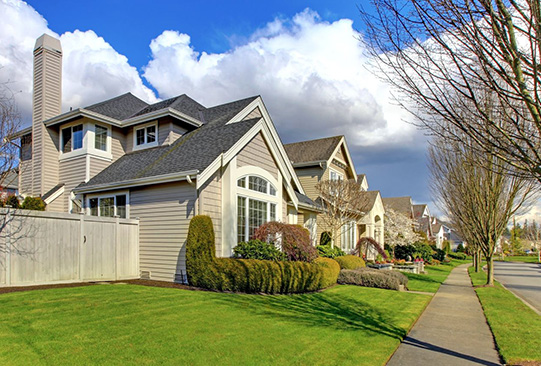A lmost everyone has been locked out of their home before. If you do not have a hidden key or someone else with a key, it can be stressful to wait for a locksmith to come and open the door. Fortunately, there are ways homeowners can address this issue, and one of the options is to get a smart lock or an electronic lock instead.
lmost everyone has been locked out of their home before. If you do not have a hidden key or someone else with a key, it can be stressful to wait for a locksmith to come and open the door. Fortunately, there are ways homeowners can address this issue, and one of the options is to get a smart lock or an electronic lock instead.
How Smart Locks And Electronic Locks Work
Every smart lock is different; however, they have a few themes. Basic electronic locks have a combination that someone has to enter before the door unlocks. Other electronic locks use fingerprints, RFID, or Bluetooth recognition to allow someone to enter. Many smart locks also allow the owner to give out digital keys that allow friends, children, and other people to come and go. The combinations are stored and act as a digital log of who has entered the home.
The Benefits Of Using Smart Locks And Electronic Locks
There are a number of benefits that come with using smart and electronic locks for homes. First, homeowners never have to worry about getting locked out of the house, as they don’t have to worry about losing manual keys. Second, homeowners can keep track of people, including their children, as they come and go. Finally, smart locks do not necessarily have to be rekeyed or replaced. Homeowners can change the combination when they feel it is nessesary..
Choosing The Right Electronic Lock
Even though smart locks and electronic locks have a variety of benefits, it is important for homeowners to think carefully about which option is best for them. Homeowners need to make sure whatever lock they choose is compatible with their phone. They also need to select locks that have security measures in place that prevent people from cracking the code or getting through the keypad. Finally, take a look at how many combinations the lock can handle. Sometimes, homeowners like to assign people specific codes so they know exactly who is coming and going. Some locks can even be customized so that certain combinations only work on certain days. This can be helpful if there is a maid or tutor who comes from time to time.

 One of the challenges you will face when deciding how much money to put down on your new home is whether to put down a larger down payment or to take a bit of money from your down payment and use it to pay “discount points” to lower your interest rate.
One of the challenges you will face when deciding how much money to put down on your new home is whether to put down a larger down payment or to take a bit of money from your down payment and use it to pay “discount points” to lower your interest rate. Last week’s economic reporting included readings from S&P Case Shiller Home Price Indices and the FHFA on home prices, data on new home sales, and the Federal Reserve’s statement on the federal interest rate range. The University of Michigan released its monthly survey on Consumer Sentiment and weekly readings on mortgage rates and jobless claims were also published.
Last week’s economic reporting included readings from S&P Case Shiller Home Price Indices and the FHFA on home prices, data on new home sales, and the Federal Reserve’s statement on the federal interest rate range. The University of Michigan released its monthly survey on Consumer Sentiment and weekly readings on mortgage rates and jobless claims were also published. S&P Case-Shiller Home Price Indices reported slower home price growth in November. Rising mortgage rates and high home prices sidelined first-time and moderate-income buyers and investors who fear buying at the peak of today’s housing markets only to face lower home values when home prices cool off.
S&P Case-Shiller Home Price Indices reported slower home price growth in November. Rising mortgage rates and high home prices sidelined first-time and moderate-income buyers and investors who fear buying at the peak of today’s housing markets only to face lower home values when home prices cool off. Many people dream of retiring one day, and there are numerous assets that contribute to that retirement goal. Social security, pension plans, and savings accounts have traditionally provided assets people use to enjoy their retirement; however, this traditional plan ignores one of the most valuable assets. Owning a home can contribute significantly to someone’s retirement goals; however, it is important to have a firm plan in place to make those retirement dreams come true. There are several ways a home can play an important role in that plan.
Many people dream of retiring one day, and there are numerous assets that contribute to that retirement goal. Social security, pension plans, and savings accounts have traditionally provided assets people use to enjoy their retirement; however, this traditional plan ignores one of the most valuable assets. Owning a home can contribute significantly to someone’s retirement goals; however, it is important to have a firm plan in place to make those retirement dreams come true. There are several ways a home can play an important role in that plan.